I.7.7 Pompeii. Casa del Sacerdos
Amandus or House of the Priest Amandus
or Casa dell’affresco di
Spartaco.
Excavated 1912 and 1924.

I.7.7 Pompeii. October 2019.
Doorway into triclinium on north side of atrium, with entrance
corridor, on right.
Foto Annette Haug, ERC Grant 681269 DÉCOR.

I.7.7 Pompeii. October 2019. Looking north through doorway of
triclinium.
Foto Annette Haug, ERC Grant 681269 DÉCOR.

I.7.7 Pompeii. December 2006. Doorway to triclinium on north-west corner of atrium.

I.7.7 Pompeii. October 2019. Looking towards west wall of
triclinium.
Foto Annette Haug, ERC Grant 681269 DÉCOR.

I.7.7 Pompeii. October 2019.
West wall of triclinium with central painting of Perseus
freeing Andromeda.
Foto Annette Haug, ERC Grant 681269 DÉCOR.

I.7.7 Pompeii. December 2006. West wall of triclinium.

I.7.7 Pompeii. October 2019. Upper west wall.
Foto Annette Haug, ERC Grant 681269 DÉCOR.

I.7.7 Pompeii. October 2019. Looking towards central wall painting
on west wall
Foto Annette Haug, ERC Grant 681269 DÉCOR.

I.7.7 Pompeii. December 2006.
West wall of triclinium with wall painting of Perseus freeing Andromeda.
There are two scenes in the one painting.
In the foreground Andromeda is chained to the rock in the sea and Perseus swoops down to slay the monster.
To the right in the background King Cepheus of Ethiopia, her father, welcomes the triumphant hero.
Kraus T. and von Matt L., 1975. Pompeii and Herculaneum: Living cities of the dead. New York: Abrams. (p. 186, fig. 250).
For a good description -
See Peters, W.J.T. (1963): Landscape in Romano-Campanian Mural Paintings. The Netherlands, Van Gorcum & Comp. (p.91-94, fig 77)

I.7.7 Pompeii. 1968.
West wall of triclinium with wall painting of Perseus freeing Andromeda. Photo by Stanley A. Jashemski.
Source: The Wilhelmina and Stanley A. Jashemski archive in the University of Maryland Library, Special Collections (See collection page) and made available under the Creative Commons Attribution-Non Commercial License v.4. See Licence and use details.
J68f0714

I.7.7 Pompeii.
West wall of triclinium with wall painting of Perseus freeing Andromeda, when first excavated.

I.7.7 Pompeii. December 2018.
Looking across triclinium towards the north wall. Photo
courtesy of Aude Durand.

I.7.7 Pompeii. October 2019. Upper north wall.
Foto Annette Haug, ERC Grant 681269 DÉCOR.

I.7.7 Pompeii. October 2019. Looking towards north wall of
triclinium
Foto Annette Haug, ERC Grant 681269 DÉCOR.

I.7.7 Pompeii. December 2006. North wall of triclinium.

I.7.7 Pompeii. 1968.
North-west corner and north wall of triclinium. Photo by Stanley A. Jashemski.
Source: The Wilhelmina and Stanley A. Jashemski archive in the University of Maryland Library, Special Collections (See collection page) and made available under the Creative Commons Attribution-Non Commercial License v.4. See Licence and use details.
J68f0723
Kuivalainen, describing the panel at the west end of the north wall –
“A simple thin candelabrum divides a red side panel into two.
On the right, a youth (young half-naked Bacchus) is standing with his weight on his right foot and his outstretched arm above a panther; his lower body is covered with a greenish-grey cloak, the sleeve of which is on his left arm. The panther is painted in movement forwards and light tones, with only the fore part of the body visible; its back is behind the youth.”
See Kuivalainen, I., 2021. The Portrayal of Pompeian Bacchus. Commentationes Humanarum Litterarum 140. Helsinki: Finnish Society of Sciences and Letters, (p.108-9, C4).

I.7.7 Pompeii. October 2019.
Central wall painting on north wall showing Heracles in the
Garden of the Hesperides.
Foto Annette Haug, ERC Grant 681269 DÉCOR.

I.7.7 Pompeii. December 2006.
North wall of triclinium, with wall painting of Heracles in the Garden of the Hesperides.

I.7.7 Pompeii.
North wall of triclinium, with wall painting of Heracles in the Garden of the Hesperides, when first excavated.

I.7.7 Pompeii. October 2019. Looking towards east wall of
triclinium.
Foto Annette Haug, ERC Grant 681269 DÉCOR.

I.7.7 Pompeii. October 2019. Upper east wall.
Foto Annette Haug, ERC Grant 681269 DÉCOR.

I.7.7 Pompeii. October 2019.
East wall of triclinium with central wall painting of
Daedalus and Icarus.
Foto Annette Haug, ERC Grant 681269 DÉCOR.

I.7.7 Pompeii. October 2019.
Central wall painting of Daedalus and Icarus from east wall
of triclinium.
Foto Annette Haug, ERC Grant 681269 DÉCOR.

I.7.7 Pompeii. December 2006. East wall of triclinium, with wall painting of Daedalus and Icarus.

I.7.7 Pompeii. December 2006.
East wall of triclinium with wall painting of the Daedalus and Icarus.
For a good description -
See Peters, W.J.T. (1963): Landscape in Romano-Campanian Mural Paintings. The Netherlands, Van Gorcum & Comp. (p.91-94, fig 79)

I.7.7 Pompeii. 1968.
East wall of triclinium with wall painting of the Daedalus and Icarus. Photo by Stanley A. Jashemski.
Source: The Wilhelmina and Stanley A. Jashemski archive in the University of Maryland Library, Special Collections (See collection page) and made available under the Creative Commons Attribution-Non Commercial License v.4. See Licence and use details.
J68f0709

I.7.7 Pompeii. October 2019. Detail from central painting on east wall
showing Icarus falling from the sky.
Foto Annette Haug, ERC Grant 681269 DÉCOR.

I.7.7 Pompeii. October 2019.
Detail of town with high walls, towers and gates, palaces and temples, from central painting on east wall.
Foto Annette Haug, ERC Grant 681269 DÉCOR.

I.7.7 Pompeii. October 2019. Detail from central painting on east
wall showing the dead body of Icarus retrieved by a fisherman.
Foto Annette Haug, ERC Grant 681269 DÉCOR.

I.7.7 Pompeii. Old undated photograph showing east wall of triclinium.

I.7.7 Pompeii.
East wall of triclinium with wall painting of the Daedalus and Icarus, when first excavated.

I.7.7 Pompeii. October 2019. East wall of triclinium.
Foto Annette Haug, ERC Grant 681269 DÉCOR.

I.7.7 Pompeii. December 2006. Looking along east wall of triclinium from south-east corner.

I.7.7 Pompeii. December 2006. Triclinium, detail of wall painting of floating figure, from east wall at south end.

I.7.7 Pompeii. October 2019. Looking towards south wall with
doorway to atrium in south-east corner.
Foto Annette Haug, ERC Grant 681269 DÉCOR.

I.7.7 Pompeii. October 2019. Central wall painting of
Polyphemus and Galatea from south wall.
Foto Annette Haug, ERC Grant 681269 DÉCOR.

I.7.7 Pompeii. December 2006.
South wall of triclinium with wall painting of Polyphemus and Galatea.
For a good description -
See Peters, W.J.T. (1963): Landscape in Romano-Campanian Mural Paintings. The Netherland, Van Gorcum & Comp. (p.91-94, fig 78)

I.7.7 Pompeii. 1968.
South wall of triclinium with wall painting of Polyphemus and Galatea. Photo by Stanley A. Jashemski.
Source: The Wilhelmina and Stanley A. Jashemski archive in the University of Maryland Library, Special Collections (See collection page) and made available under the Creative Commons Attribution-Non Commercial License v.4. See Licence and use details.
J68f0711

I.7.7 Pompeii. 1968.
South wall of triclinium with detail from wall painting of Polyphemus. Photo by Stanley A. Jashemski.
Source: The Wilhelmina and Stanley A. Jashemski archive in the University of Maryland Library, Special Collections (See collection page) and made available under the Creative Commons Attribution-Non Commercial License v.4. See Licence and use details.
J68f0710

I.7.7 Pompeii.
South wall of triclinium with wall painting of Polyphemus and Galatea, when first excavated.

I.7.7 Pompeii. 1968.
Detail of border edge of central painting from south wall of triclinium. Photo by Stanley A. Jashemski.
Source: The Wilhelmina and Stanley A. Jashemski archive in the University of Maryland Library, Special Collections (See collection page) and made available under the Creative Commons Attribution-Non Commercial License v.4. See Licence and use details.
J68f0713

I.7.7 Pompeii. 1968.
Detail of border edge of central painting from south wall of triclinium. Photo by Stanley A. Jashemski.
Source: The Wilhelmina and Stanley A. Jashemski archive in the University of Maryland Library, Special Collections (See collection page) and made available under the Creative Commons Attribution-Non Commercial License v.4. See Licence and use details.
J68f0712
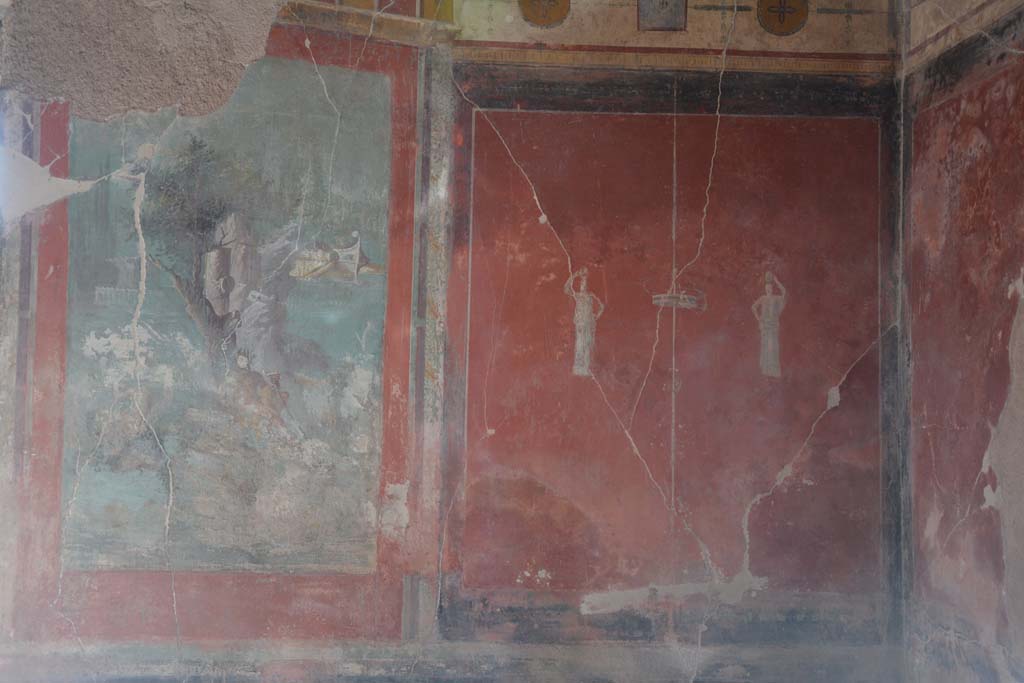
I.7.7 Pompeii. October 2019. South wall towards south-west corner.
Foto Annette Haug, ERC Grant 681269 DÉCOR.

I.7.7 Pompeii. December 2006. South wall of triclinium and south-west corner.

I.7.7 Pompeii. 1968.
South wall of triclinium and south-west corner. Photo by Stanley A. Jashemski.
Source: The Wilhelmina and Stanley A. Jashemski archive in the University of Maryland Library, Special Collections (See collection page) and made available under the Creative Commons Attribution-Non Commercial License v.4. See Licence and use details.
J68f0724
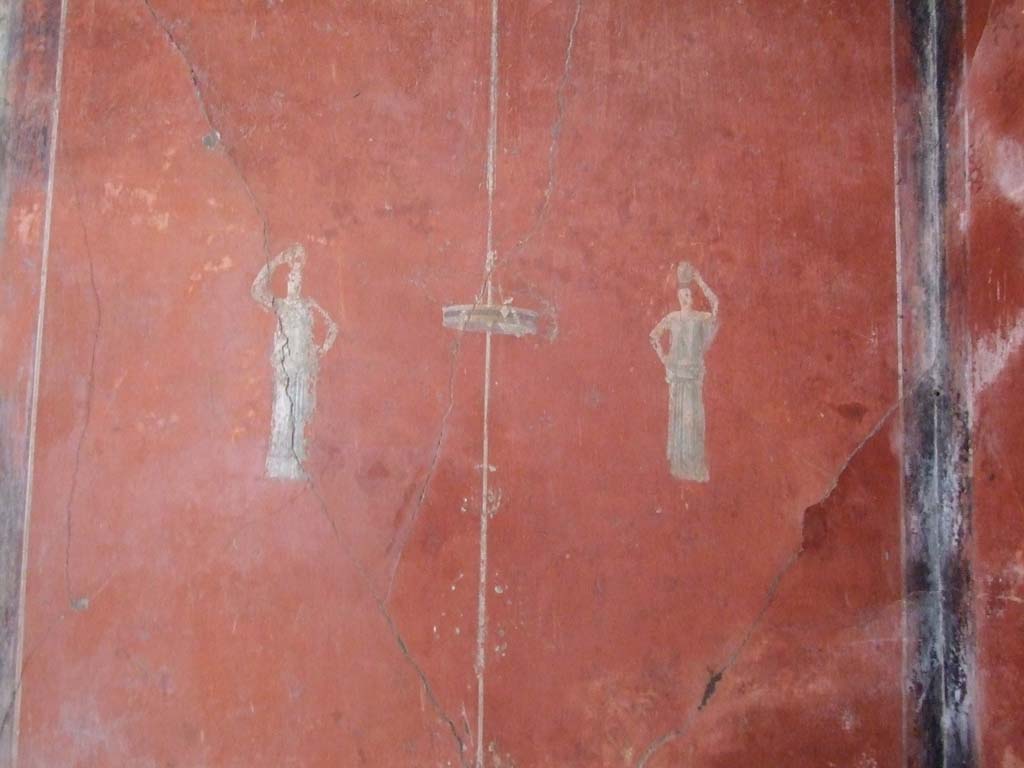
I.7.7 Pompeii. December 2006. Detail of wall paintings from west side panels on south wall of triclinium.

I.7.7 Pompeii. October 2019. Looking north across flooring in
triclinium.
Foto Annette Haug, ERC Grant 681269 DÉCOR.

I.7.7 Pompeii. December 2006. Detail of mosaic floor in triclinium.

I.7.7 Pompeii. October 2019. Looking across flooring towards
north-east corner and east wall.
Foto Annette Haug, ERC Grant 681269 DÉCOR.
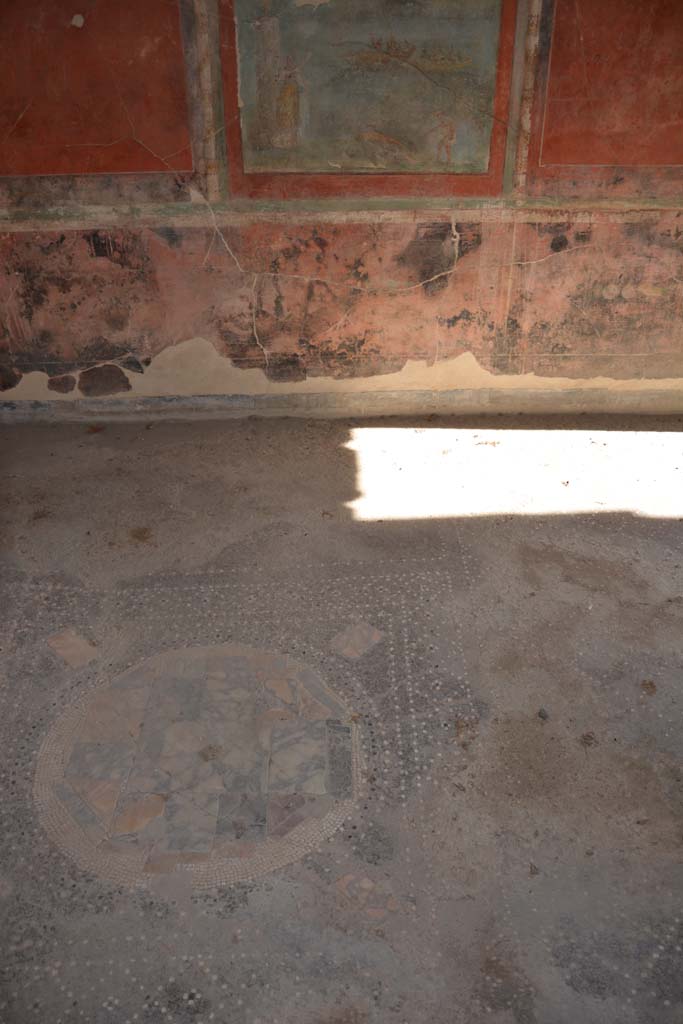
I.7.7 Pompeii. October 2019. Looking east across flooring.
Foto Annette Haug, ERC Grant 681269 DÉCOR.
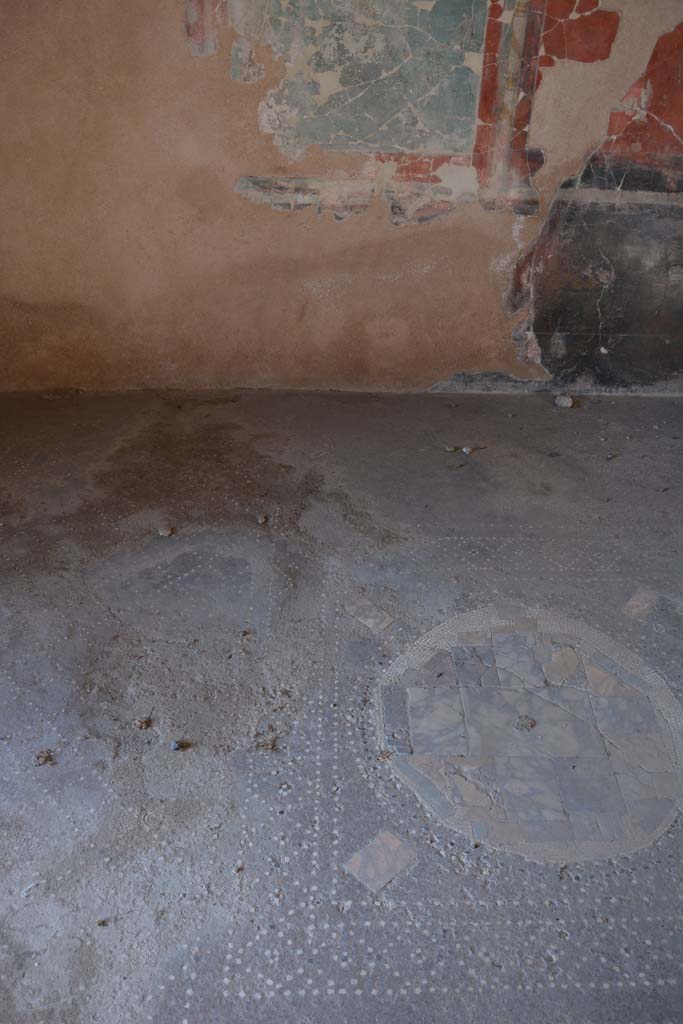
I.7.7 Pompeii. October 2019. Looking west across flooring.
Foto Annette Haug, ERC Grant 681269 DÉCOR.
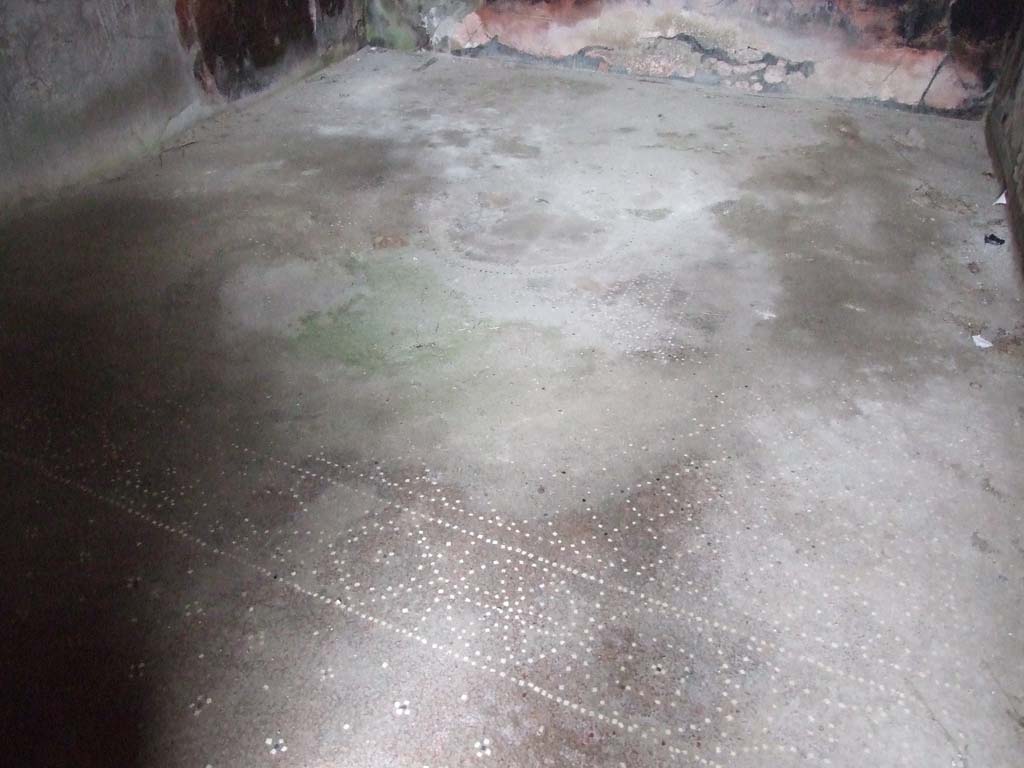
I.7.7 Pompeii. December 2006. Mosaic floor in triclinium, looking north-west.

I.7.7 Pompeii. October 2019. Looking across flooring towards south-west
corner.
Foto Annette Haug, ERC Grant 681269 DÉCOR.
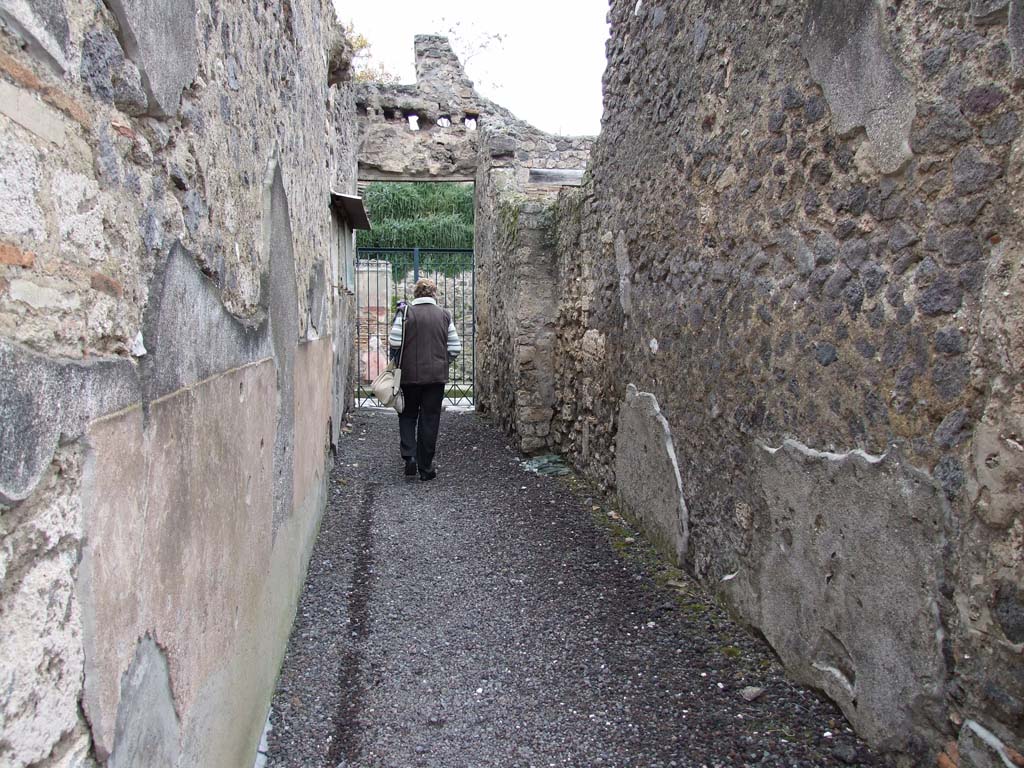
I.7.7 Pompeii. December 2006. Vestibule looking north to Via dell’Abbondanza.

Statuette of Isis used for headgear, found in I.7.7. Now in Naples Archaeological Museum.